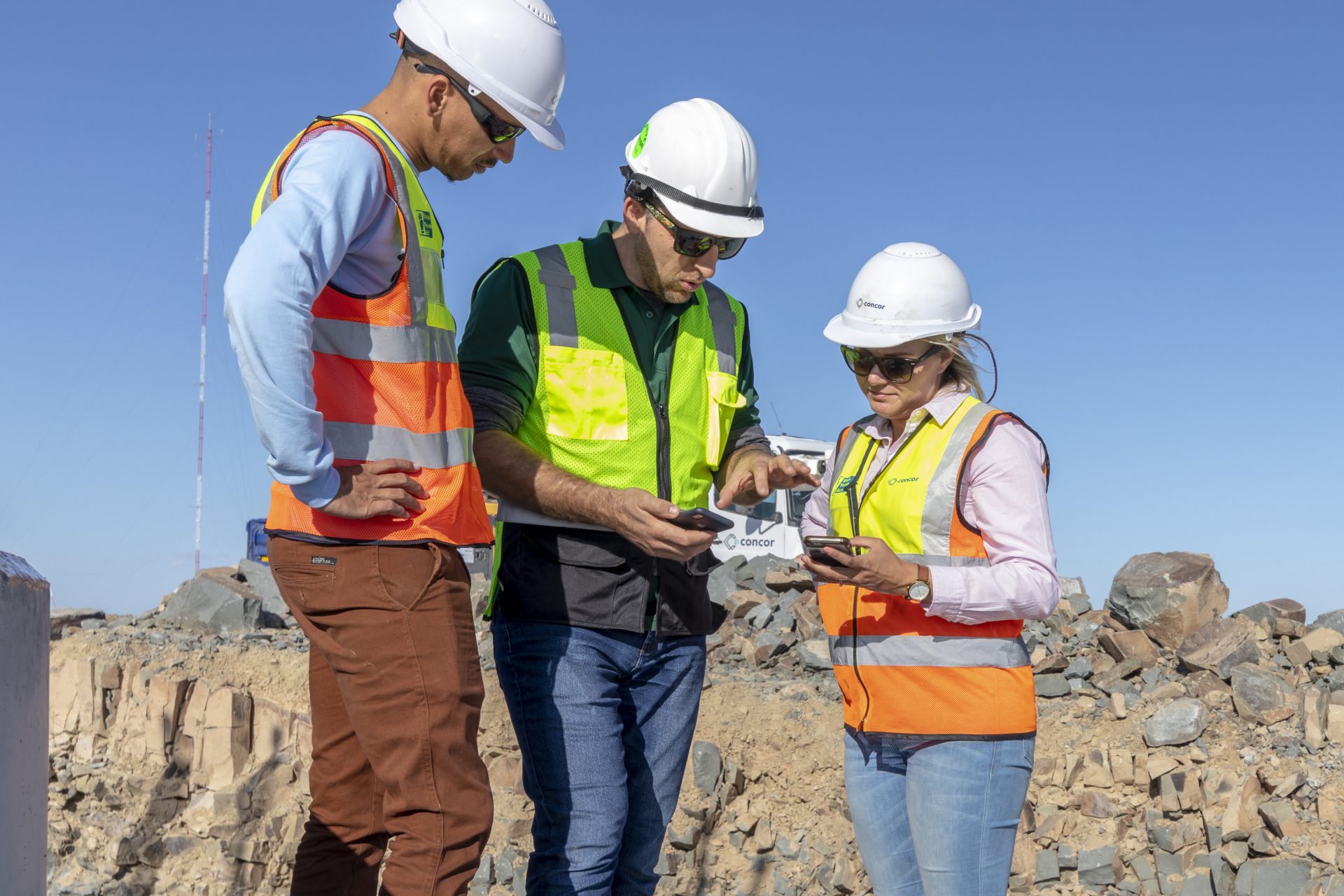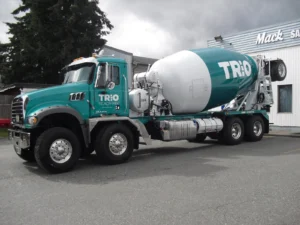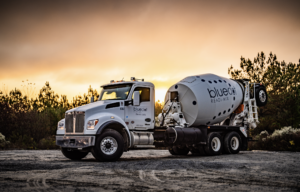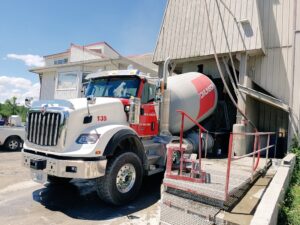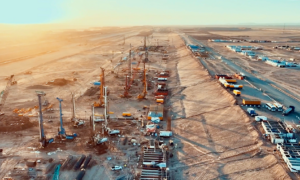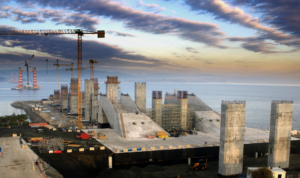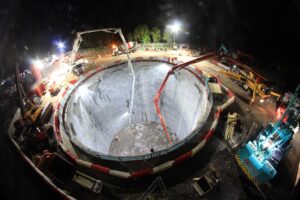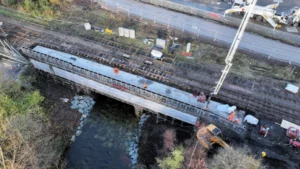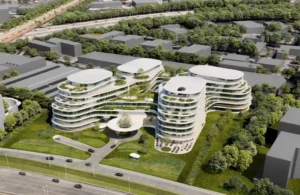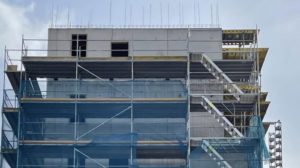PROBLEM
About Concor
Concor Construction (PTY) Ltd. is one of the largest construction companies in South Africa with a reputation for delivering major complex projects that meet or exceed client expectations. Visit concor.co.za
In 2019, Concor Infrastructure began construction on the Roggeveld wind energy facility. This 147 MW facility is expected to improve South Africa’s carbon footprint by reducing carbon dioxide emissions by about 24,000 tons per year through electricity production.
The wind energy facility consists of 47 AW125/3150 and AW125/3000 turbines. The base for each turbine is roughly 19 meters in diameter and about 2.35 meters high. For quality control, over 336 cubes of concrete were used for strength monitoring. Construction is expected to be completed and the facility fully operational by spring 2021.
Challenging Location
Construction took place in the Karoo on the boundary between the Western and Northern Cape provinces. This is a remote, rugged semi desert region occupying roughly 153,000 square miles or about a third of South Africa.
The climate is one of extremes with temperatures ranging from -15°C/-27°F on the plateau in winter and over 40°C/104°F on the plains in summer. These tremendous temperatures create significant challenges for the extensive concrete work required, particularly during the hot summer months.
The Heat Is On
Extreme heat significantly increases evaporation of water used to hydrate and cure concrete. It is necessary to provide adequate curing conditions and provide additional moisture in the air, mostly using mist spray, to reduce the risk of shrinkage cracking. High ambient and concrete surface temperature could always be monitored in real-time with the SmartRock sensors, letting team members know exactly when to apply cooling strategies.
Continuous Temperature Monitoring Critical
The size of the foundation implies that the placed concrete is considered a mass element. Even with proper concrete mix design, which allows for lower heat generation through the use of cement extenders, it is important to monitor the concrete’s maximal temperature and gradient to prevent short term and long-term cracking.
To ensure the in-place concrete did not exceed 70° C/ 158° F Concor needed a strategy for continuous temperature monitoring. As a result, sensors were placed at the core of the element. Additional sensors were place below the concrete surface to also measure the coldest temperature in the concrete element as temperature differential was also a concern.
Concor’s Construction Manager, Marritus Bezuidenhout, says they wanted a gradient differential of less than 20°C / 35 °F over 1 lineal meter.
Wired Solutions Unreliable
With previous major construction projects Concor used wired thermocouple data loggers to monitor temperature. “On conventional controllers, if there’s a hardware issue, then all the data’s gone,” says Bezuidenhout. “That’s the biggest problem,” he confirms.
Batteries were also a concern. “If batteries ran out [of power] over a weekend or they weren’t changed in time, then all that data was also lost.” On previous projects Bezuidenhout says he “spent a lot of money on batteries.” Weather can also pose challenges. “Previously I’ve lost controllers due to rain,” he exclaims. These and other issues motivated Bezuidenhout to turn to SmartRock from Giatec.
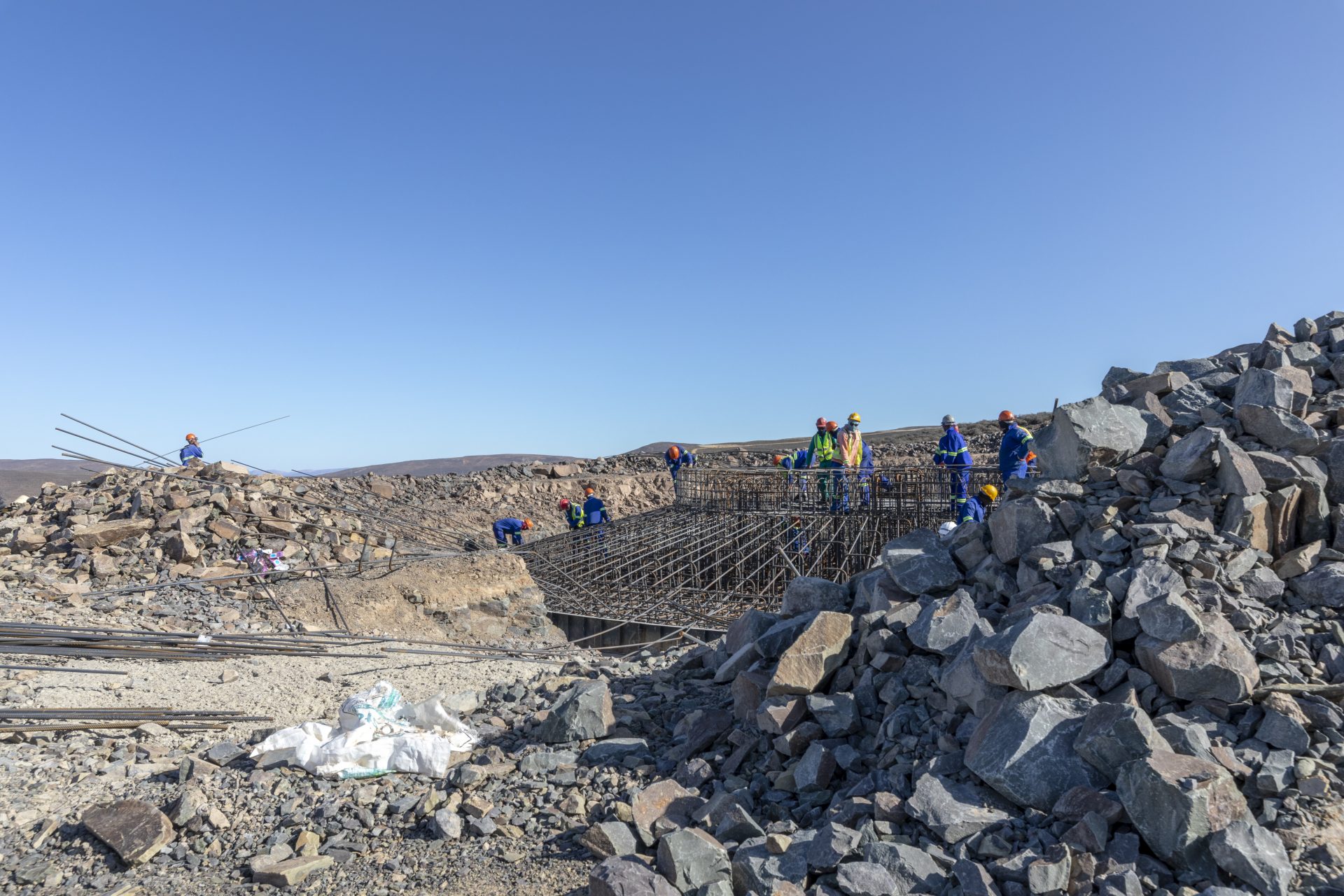
SOLUTION
SmartRock® – a Better Choice
SmartRock provides real-time temperature and strength data through wireless sensors that are quickly and easily attached to the concrete reinforcing. There are no expensive external wires or cumbersome data loggers to worry about. Data is available immediately from any iOS or Android device. “The biggest attraction of the product [SmartRock] to me was the fact that it is low maintenance,” says Bezuidenhout
No Connection – No Problem
Because SmartRock is a completely wireless solution, data can be read even if Internet connectivity is lost – a concern given the remote location of the Roggeveld windfarm. With SmartRock, data from individual sensors can always be seen – and uploaded to the cloud for sharing later, when connectivity is restored.
Also, unlike traditional thermocouples previously used by Concor, data is never lost with a SmartRock solution, even in the unlikely event a battery dies.
Information in the Palm of Your Hand
One of the greatest benefits realized from using SmartRock on the Rogggeveld project is how easily data can be seen or shared with multiple users. All that’s required is an intuitive, easy-to-use mobile app and granting of access permissions. This enabled the project team to monitor and control concrete temperature and temperature difference during extreme hot weather.
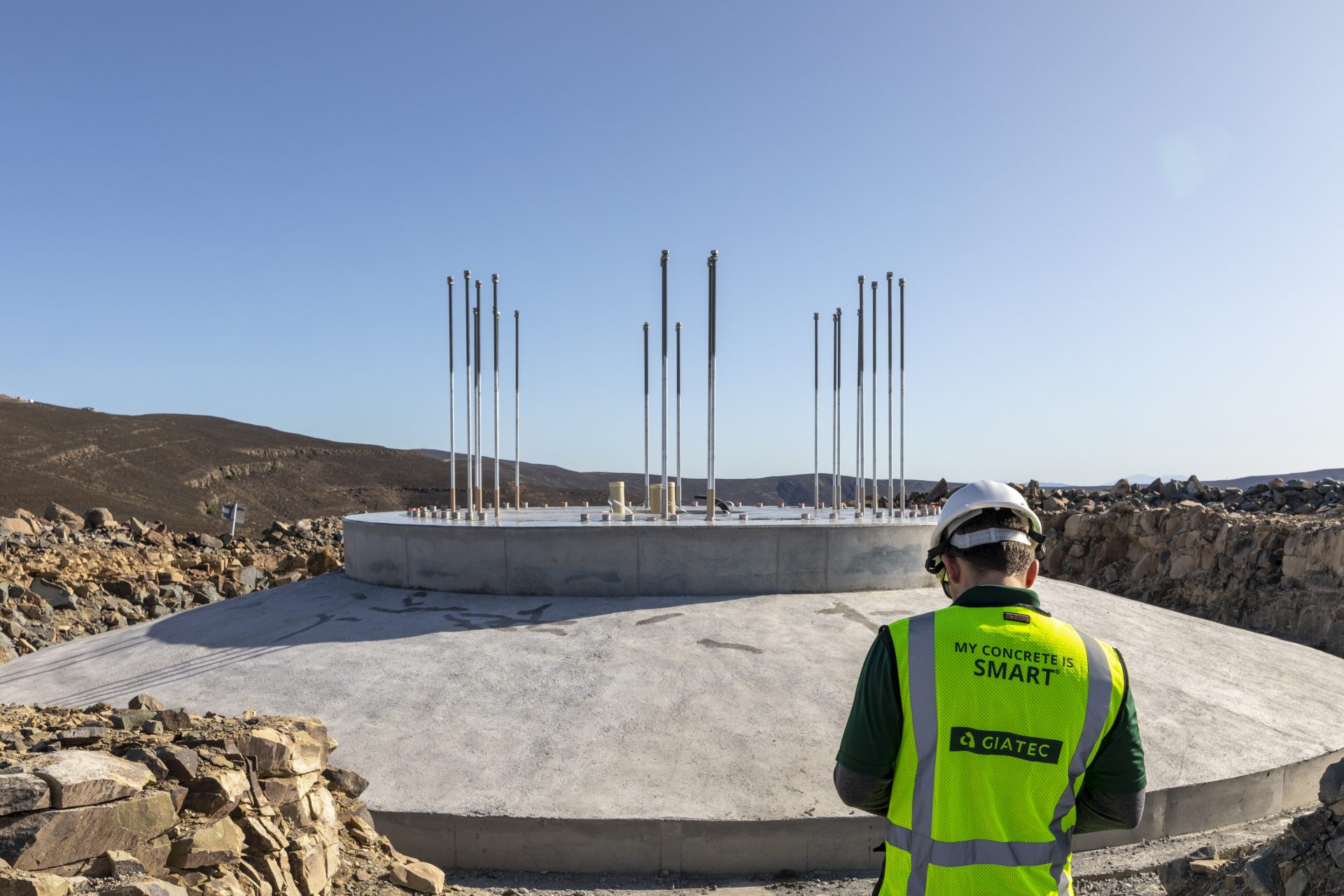
RESULTS
Peace-of-Mind for Clients
Because sensors are installed in the forms, SmartRock provides exact readings of the in-situ concrete rather than a separate curing box (aka field cured cylinders, break tests) – the use of which were mandated by the client for this project. While field cured test cylinders are the conventional method for confirming the strength of in-place concrete, they require more person hours to prepare, collect and transport samples to the lab – which adds time and cost to a project.
In contrast, real-time temperature readings can be shown on a mobile app to anyone concerned about the concrete in extreme heat. In addition to being far easier and more efficient, “that can also put the client at ease,” says Bezuidenhout.
Giatec 360 Provides Easy Data Analysis and Reporting
The Concor project team also used Giatec 360, a cloud dashboard for gaining insights into the performance of concrete mixes in real-time, managing data, and quickly generating useful reports. “It’s very easy to use, easy to access” confirms Bezuidenhout.
Bezuidenhout says using Giatec 360 for data reporting was “light years faster than the previous data loggers” with “time savings of at least two hours” to put together an incisive report. “And reports are nicely presented, he says.
Clients Value Transparency
Clients also appreciate the reports, which he says helps “put them at ease.” Bezuidenhout extended access permissions to the client so that they could see real-time temperature data directly. “They’re very impressed,” says Bezuidenhout adding that this kind of transparent, open data sharing increases “confidence from their side that there’s no tampering or false reporting or misleading information whatsoever.”
Going Further…With Maturity
Bezuidenhout also wanted to use SmartRock to confirm strength, which required client approval. However, for the Roggeveld project, the client mandated the use of traditional curing boxes and field tested concrete samples until more evidence supports the maturity method.
Bezuidenhout is working hard to build-up the documentation and provide the ‘concrete’ evidence clients need to have confidence in the maturity method. He has already compared SmartRock’s maturity data on Roggeveld and a previous wind farm project. “They [SmartRock sensors] correlated quite well…less than a percent variation,” he confirms.
Strength Data Used for Backfill
Although SmartRock couldn’t be used for maturity – despite providing accurate strength data that is ASTM C1074 compliant – the client did accept these results for backfilling. Rather than waiting for the lab to crush samples and provide strength data, Bezuidenhout’s team was able to backfill when SmartRock sensors showed 70 percent concrete strength. This alone resulted in significant cumulative time savings on the Roggeveld project.
Important Time and Cost Savings
Relying on concrete samples to crush for early backfilling would have taken “at least a day” or 24 hours per base says Bezuidenhout. It would require getting samples out of the curing box, crushing them in the field lab, compiling and submitting a report to the client, and then getting approval to start backfilling on the base.
Using SmartRock strength data for backfilling enabled Concor to eliminate those steps and realize important time savings. “As soon as I can get the base foundation backfilled, the sooner I can finish off the crane hardstand, the sooner the crane or components can be delivered onto the hardstand, the sooner the whole installation process can start,” says Bezuidenhout.
“Over the course of the Roggeveld project to date, which is about half the bases, I’d say we have saved almost a month by relying on SmartRock’s strength data for backfilling,”
Marritus Bezuidenhout, Construction Manager, Concor Construction
South Africa’s Construction Industry Is Transitioning
Bezuidenhout sees Maturity as the next big hurdle for the South African construction industry. “Clients still need more support documentation…more evidence,” he says to have full confidence in the Maturity Method – and reduce or eliminate the use of traditional curing boxes.
He also notes that wind farm projects like Roggeveld have international investors. “That changes the way people see and experience technology in the construction sector,” says Bezuidenhout. “There’s definitely an evolution coming,” he adds.
